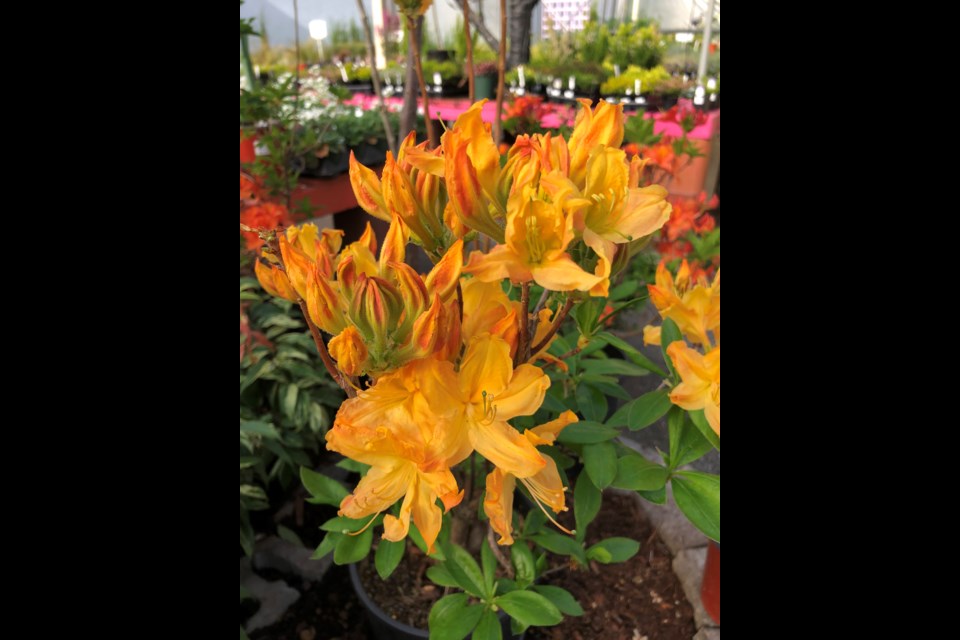Often at this time of year, we admire the many flowering shrubs in other folks’ gardens, but we never seem to get around to planting some of these beauties in our own yards.
I’m sure part of the reason is that we simply don’t know what these plants are, and that’s a real shame because they can provide a sequence of almost continuous colour all spring.
I like to plant flowering shrubs among conifers, broad-leaved evergreens (like rhododendrons) and evergreen perennials because arranging them this way creates a more pleasing year-round effect, especially in winter when flowering shrubs do not look their best.
As well as their period of blazing colour, flowering shrubs have many other features that can enhance a garden.
During winter, their branches can be a source of cut flowers to bring indoors and enjoy as their blooms open.
Many shrubs have great summer foliage colour, like spiraeas - ‘Goldmound’ is a dwarf variety; ‘Magic Carpet’ is a bronze with pink flowers; and old-fashioned ‘Gold Flame’ is a variety with bright coppery-yellow new growth.
Viburnums have impressive autumn colour, which adds a nice touch to a fall garden.
In winter, flowering shrubs provide great protective thickets for birds and some provide food.
As well, flowering shrubs attract birds all spring and summer to keep insect populations under control.
From the old-fashioned snowball tree (Viburnum opulus ‘Sterile’) to the new continuous June-to-frost bloomer, ‘Summer Snowflake’ (Viburnum plicatum) — an introduction from the UBC Botanical Garden — viburnums are the backbone of a spring garden.
If you enjoy fragrance, then the perfume of Viburnum carlcephalum will knock your socks off.
I’m also impressed with the semi-evergreen V. burkwoodii with its glossy leaves and fragrant, pink-budded blossom clusters that open into pure white perfumed balls.
Not to be ignored are the V. tomentosum varieties, like ‘Mariesii.'
I like them because of the masses of flat, white lacecap-like flowers that appear in horizontal tiers on these rather wide-spreading plants.
In a way, they’re similar to ‘Summer Snowflake’, but very low and spreading in appearance.
Deciduous azaleas will be budding in May, which means we’re going to enjoy them in our June gardens.
The old ‘Mollis’ varieties still pack a wallop with their brilliant orange and red colours, and if you are lucky and can find an old yellow seedling variety, they will fill your whole garden with a beautiful, sweet perfume.
If fragrance is important, try the ‘Viscosum’ hybrids.
They are sometimes called swamp honeysuckles because of their perfume and narrow funnel-shaped small flowers.
‘Antelope’ is a soft pink with a salmon throat; ‘Rosata’ is a deep carmine rose; and ‘Arpege’ is a deep yellow.
Hybrids are the real showstoppers! The large burnt orange ‘Gibraltar’ and the round, rose-pink, snowball-like blooms of ‘Homebush’ are among my favourites.
Speaking of fragrance, the white buds of Osmanthus fragrans are just beginning to open, and this easy-care evergreen is a "must have" in zone 7 spring gardens.
Growing to about eight feet in height, its small green leaves are very attractive year-round.
Depending on the variety, Japanese kerrias are just budding up now for striking double or single blossoms. They are wonderful early bloomers.
From the tall, old-fashioned ‘Lynwood Gold’ to the many new compact varieties, forsythias are truly the ‘kick off’ flowering shrubs. They are Mother Nature’s starting gun; when they begin to bloom, it is time to start our early gardening.
I particularly like Proven Winners ‘Show Off’ for its gigantic bright yellow blossoms.
These are just a few of the many flowering shrubs that are in bloom or are about to come into bloom, and I hope you can take the time to at least look at them in private or public gardens and nurseries to see just how spectacular they can be.
I’m sure you will be enticed to try them in your own garden.





